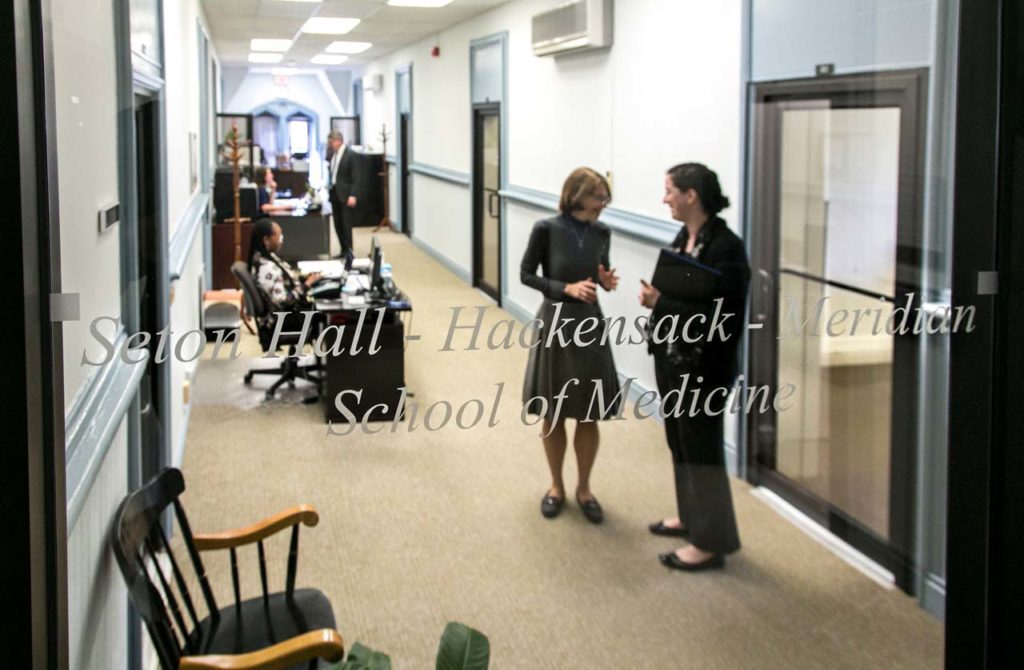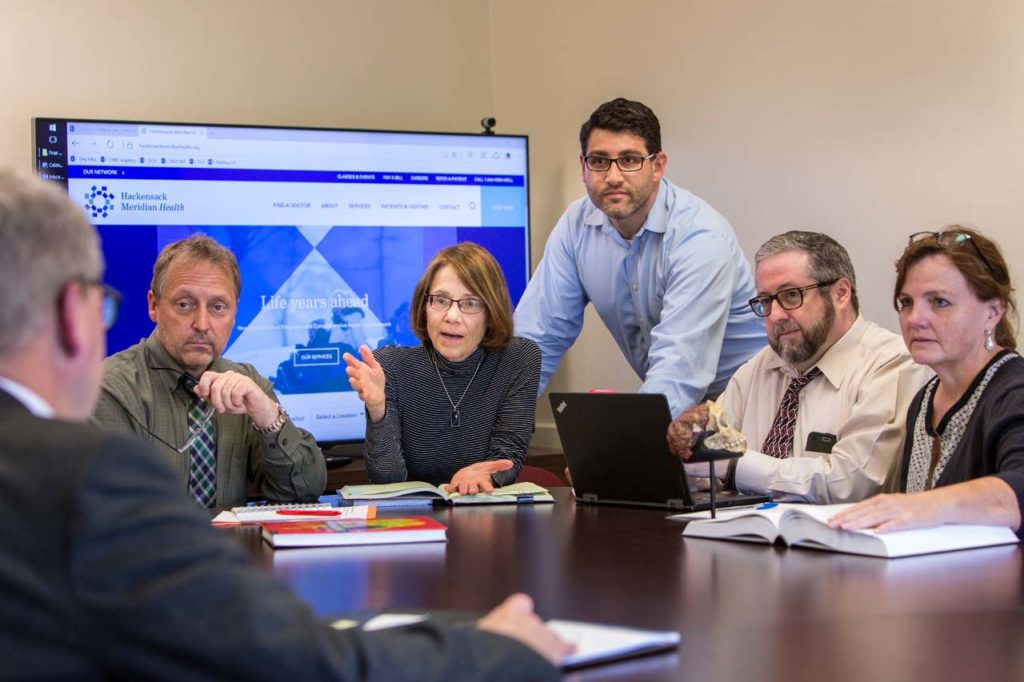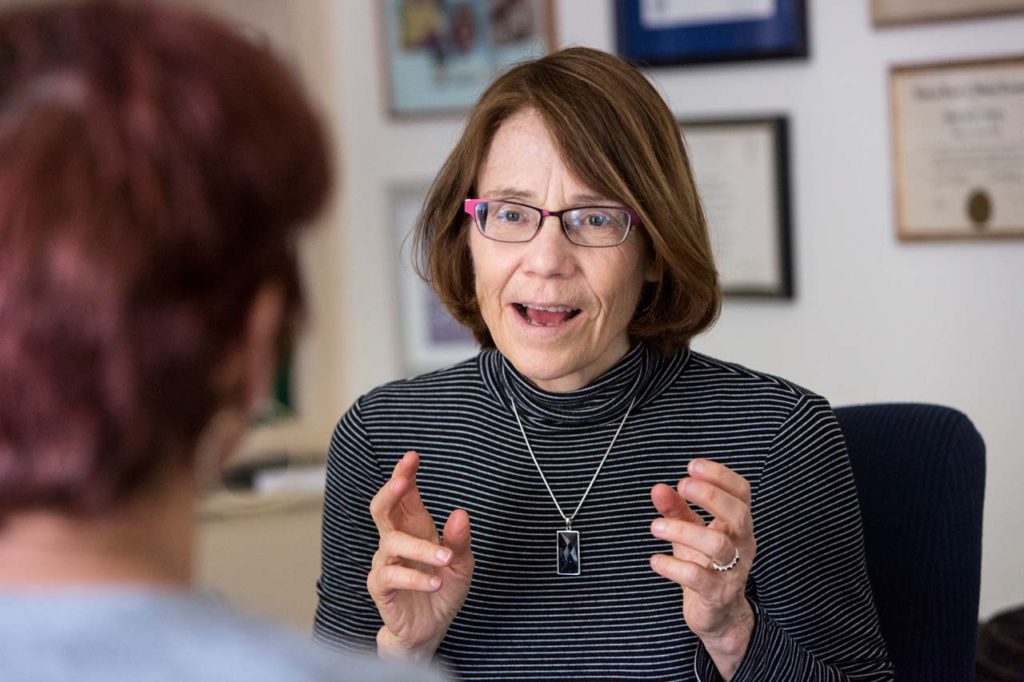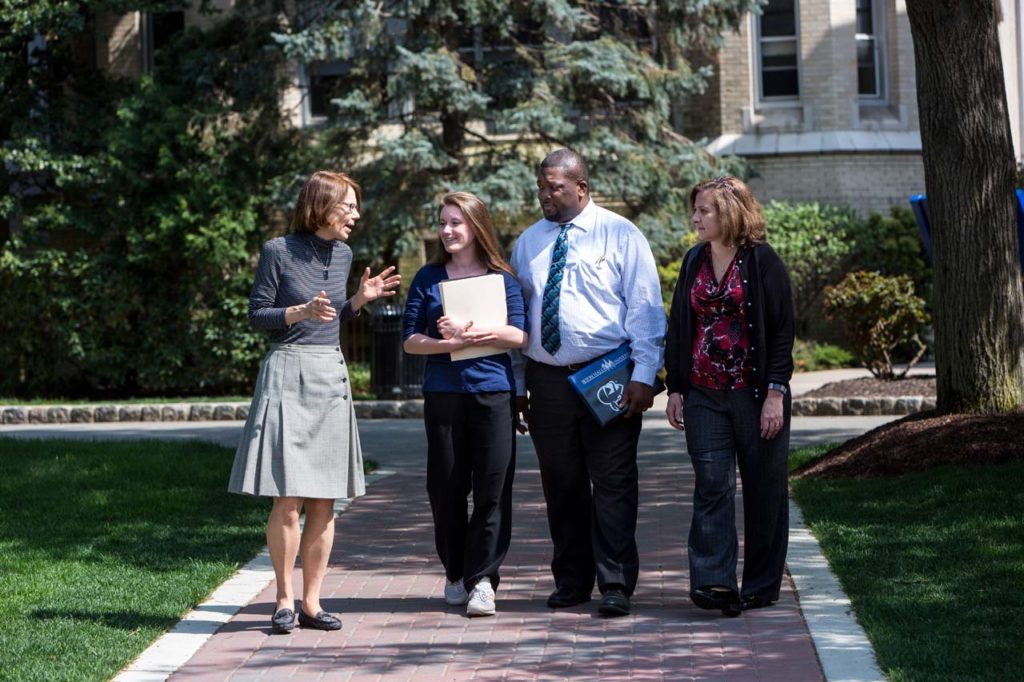The anticipated Seton Hall – Hackensack Meridian School of Medicine will offer an innovative, team-based approach that will mirror how healthcare will be delivered in the future
by Jessica Jones Gorman • Photos By Amessé Photography
Physicians of the future will undoubtedly think and cure differently. Tomorrow’s doctors will not only have to be biomedically trained, they will also have to be behaviorally and s y on this forward-thinking approach to medicine ocially skilled in order to become both socially responsible, and collaborative members of the healthcare system and provide high-quality, patient centered care. Now, for the first time in several decades, New Jersey is getting its own private medical institution, one focused entirelyon this forward thinking approach to medicine.

“The new Seton Hall – Hackensack Meridian School of Medicine will offer an innovative, team-based approach to education that will mirror how healthcare will be delivered in the future,” the university noted in a statement. “Our graduates will learn to apply the most advanced scientific knowledge and tools to help patients in their communities—where health and illness actually occur—as well as in hospitals and clinics in New Jersey and beyond.”
The school, announced in 2015, is a collaboration between Seton Hall University and the Hackensack Meridian Health network. One of its goals is to help address the critical physician shortage facing the state and the nation. (By 2020, it is estimated, New Jersey will face a shortage of 2,500 physicians.) The joint venture will help combat the shortage by providing key educational, research, and career opportunities to incentivize a new generation to pursue medical careers.
In addition to its commitment to educational and healthcare excellence, the school will focus on community and health sciences research, high-quality care, and the advancement of medical and health science educational imperatives. Seton Hall will co-locate its College of Nursing and School of Health and Medical Sciences with the new school of medicine.
“A unique curriculum and progressive innovation will be at the core of the Seton Hall – Hackensack Meridian School of Medicine’s program of study,” noted Dr. Bonita Stanton (seen on facing page), who serves as dean.
Stanton graduated from the Yale University School of Medicine and completed her pediatric residency at Rainbow Babies & Children’s Hospital in Cleveland—her pediatric infectious disease fellowship training at Yale. She was chosen for this role because of her experience with both physician training and community-based research. For the past four years, Stanton has been vice-dean for research at the Wayne State University School of Medicine. Previously, she was chair of the Department of Pediatrics at Wayne State; pediatrician in-chief at Children’s Hospital of Michigan at the Detroit Medical Center; and chair of the pediatrics department at West Virginia University.

For five years, she lived and worked in Bangladesh as a health consultant to the World Bank and the International Center for Diarrheal Diseases Research. She also directed a community-based research and service program designed to help women and children in the slums of Dhaka.
“Living and working in Bangladesh was fundamental in the formation of my career,” Stanton said. “There, we taught the residents, largely recent immigrants from rural Bangladesh to Dhaka’s rapidly growing urban slums, to treat people with diarrhea, which was killing thousands. Our trainers were volunteers living in the slums who themselves were uneducated formally, but they learned quickly and questioned why we were just treating the diarrhea, not trying to prevent it. When we told them that preventive measures like proper hand-washing would alleviate the illness, we all realized how difficult following some of these ‘simple’ prevention measures would be in a crowded slum area with very limited access to water and an absence of even the most rudimentary sewage system.”
In response, Stanton launched observational studies of slum-dwelling families with differing rates of diarrhea, She used the results to identify behaviors associated with low rates of the condition to teach health intervention practices and show community members how to achieve wellness.
“It set a tone for the rest of my career, which focused on community-based research,” Stanton said.
That socioeconomic concentration—an understanding of contributing health factors like nutrition, compliance, and access barriers—is at the heart of the Seton Hall School of Medicine’s unique mission.
“The overall vision we have—and this is not an outlandish vision at all—is that someday, regardless of socioeconomic status, ethnicity, or race, people will experience the same health outcomes,” Stanton said. “The foundation for good health lies within social support, which we are so desperately lacking. Health and wellness do not happen in a hospital or physician’s office. They occur in the community. Yes, we need excellent hospitals and tertiary and quaternary care, but they are not a replacement for what should be happening in the community. We need access to community-based nursing, and we need to train physicians to understand the context of life that their patients are living, so they can adapt and change their treatment accordingly.”

That’s why a core course at the medical school will be The Human Dimension, which will be part of the curriculum for the entire three-year program.
“It will consistently bring students back into the community —they will follow three to five families throughout the curriculum—where they can learn just how influential a patient’s surroundings are,” Stanton said. “If they work with residents in their own neighborhood, they can see firsthand the obstacles to optimum health. For instance, if you’re sending a patient home late in the evening and there’s no open pharmacy along the bus route they take, the physician needs to take into account that they will not get the drug they need that night. We want our doctors thinking about whether their patients have access to the dietary suggestions they prescribe, as well as considering what efforts can be taken to address major absences of critical needs within the community through policy, etc.”
Technology will play a major role as well. “Patients don’t need to come into a doctor’s office for every follow-up or checkup,” Stanton said. “So our students will be learning how to better serve patients with technology. It’s particularly helpful for geriatric patients, who can use monitored devices to take their meds. For example, devices exist that will attach to the TV and request that a patient step on a scale and check in with a physician’s office at the beginning of a show he or she regularly watches.”
Doctors can also follow up with face-to-face contact through the television, and will be able to monitor whether or not a particular prescription bottle has been opened.
“It’s this type of innovation that will really allow us to personalize medical treatment,” Stanton said, adding personalizing healthcare will also require a more diverse workforce. “We know that the best teachers and influences are those with which a patient can identify. That’s why we need to see a more diverse medical profession, and we’re working with various community colleges and pipeline programs to aggressively build a program that will recruit students from underrepresented backgrounds.”
Stanton is well aware of the rising cost of a medical education. “There are many students who completely rule out a medical career because they feel they could never shoulder the economic burden,” she said. “So we’re making scholarships a priority and have developed a three-year program in which students could go directly into residency, saving a full year’s tuition—earning money instead of spending it.”
It’s all a part of medicine’s changing landscape.
“In the early 21st century, the medical profession did a century review,” she explained, “which revealed that the profession simply hadn’t kept up with modern pedagogy and was, frankly, not consistent with real lifelong learning.”
This proliferation of new knowledge is extremely positive for the entire field of medicine, said Stanton. “It’s very exciting to witness the change from passive [lecture based] learning to active learning, recognizing that if you give students the basic knowledge and tools they need to actively engage with the community, there can be a marked difference in the way we deliver healthcare. It’s a very exciting time to launch this institution and help initiate this change.”

Seton Hall University – Hackensack Meridian School of Medicine
400 South Orange Ave., South Orange
973.761.9000 / shu.edu/medicine
